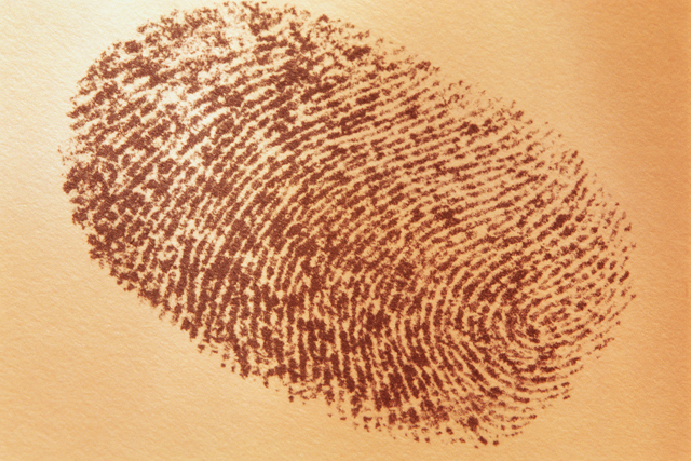- Idaho Coalition Against Identity Theft Resource and Referral Guide
- Identity Theft in Idaho
- Types of Identity Theft
- Tools for Assisting Identity Theft Victims Presentation
- Identity Theft Card
- Identity Theft Victim's Complaint and Affidavit
- Remedying the Effects of Identity Theft
- Idaho Identity Theft Manual
- Take Charge: Fighting Back Against Identity Theft
- Avoiding Credit and Charge Card Fraud
- What is Identity Theft?
- Have You Ever Wondered about Identity Theft?
- Privacy and Identity: What To Do If You're A Victim of Identity Theft
Identity Theft in Idaho
 In October 2011, Idaho Legal Aid Services (ILAS) was awarded funds to form the Idaho Coalition Against Identity Theft (ICAIT) to serve Idaho identity theft victims. The Maryland Crime Victims' Resource Center awarded ILAS funds from the U.S. Department of Justice Office for Victims of Crime to form a statewide Coalition comprised of agencies, nonprofits, businesses and individuals to improve services and outcomes for identity victims, particularly seniors and “near seniors” age 50 and up.
In October 2011, Idaho Legal Aid Services (ILAS) was awarded funds to form the Idaho Coalition Against Identity Theft (ICAIT) to serve Idaho identity theft victims. The Maryland Crime Victims' Resource Center awarded ILAS funds from the U.S. Department of Justice Office for Victims of Crime to form a statewide Coalition comprised of agencies, nonprofits, businesses and individuals to improve services and outcomes for identity victims, particularly seniors and “near seniors” age 50 and up.
One of ICAIT’s goals is to educate the public about identity theft and the needs of identity theft victims. Definitions of identity theft vary. Congress defined identity theft in the Fair Credit Reporting Act as “a fraud committed or attempted using the identifying information of another person without authority.” 15 USC § 1681a. Idaho law provides: “It is unlawful for any person to obtain or record personal identifying information of another person without the authorization of that person, with the intent that the information be used to obtain, or attempt to obtain, credit, money, goods or services without the consent of that person.” Idaho Code 18-3126.
Types of identity theft include:
- Financial identity theft,the most common form, involves the unauthorized use of an individual’s personal information for financial gain. Thieves often use a victim’s existing account or open a new account(s) in their name. According to the Federal Trade Commission (FTC), the misuse of existing accounts makes up 75% of victim reports, with credit card accounts being the most commonly misused account. Credit card information is often stolen through skimming (using a data storage device when processing a card), phishing (pretending to be a financial institution to get account holders to reveal personal information) or card theft. Financial identity theft victims often face denial of credit, increased financial charges, inability to get a job, or even bankruptcy. To detect financial identity theft consumers should review statements for unusual activity and regularly check their credit reports for fraudulent accounts.
- Criminal identity theft occurs when someone uses the victim’s name and information as his own during an encounter with law enforcement. This could lead to warrants issued in the victim’s name or entry of a guilty plea in their name.
- Medical identity theft involves the unauthorized use a victim’s name or health insurance information to obtain medical services. Victims often face costly medical bills or are unable to use health insurance benefits exhausted by the thief. A victim’s life can be put at risk due to the thief’s medical information being made part of their medical record, supplying care providers with inaccurate health related information.
- Government identity theft occurs when an imposter supplies the information of another person to a government agency, such as the IRS, Social Security Administration, or Idaho Department of Health and Welfare to obtain work or benefits.
- Synthetic identity theft is the use of a victim’s Social Security number with another name and date of birth to create a new, fictitious identity. Synthetic ID theft occurs where a thief does not have or want to use the victim’s other identifying information. This theft can be difficult to detect because new accounts and other suspicious activity may not appear on the victim’s credit report.
- Identity assumption is the impersonation of another person on the internet, with the “intent to obtain a benefit or injure or defraud another.” NY Penal Code § 190.25. An example is creating a Facebook account using another person’s name and photos. Identity assumption has only been specifically addressed in California and New York state law.
Victims of the different kinds of identity theft typically require different relief.
Financial identity theft victims often need help negotiating with creditors to close or freeze accounts and stop collection on fraudulent accounts. They may need assistance contacting credit reporting agencies to get a Fraud Alert placed on their credit reports. A Fraud Alert signals potential creditors that someone else is using that consumer’s identity and requires additional steps to confirm an individual’s identity before issuing new credit. It also entitles the victim to a free credit report. An advocate can further assist a victim by helping them review their credit report to find suspicious activity and dispute fraudulent charges.
Financial identity theft victims should file an Identity Theft Victim’s Complaint and Affidavit (Complaint) with the FTC, https://www.ftccomplaintassistant.gov/, or 1-877-438-4338. This is an important tool because it collects critical information in a standardized format that is widely accepted by creditors and credit reporting agencies when victims dispute debts. When the Complaint is combined with a police report it becomes an “Identity Theft Report.” An Identity Theft Report allows a victim to: block fraudulent information from appearing on her credit report; prevent a creditor from reporting fraudulent information to a credit reporting agency; prevent a creditor from placing the debt into collection; obtain transaction documents (such as applications completed by the thief); and place a seven year fraud alert on the victim’s credit reports.
Victims of criminal identity theft should contact local law enforcement to request fingerprints and photos for comparison with the identity thief. After providing law enforcement with proof of identity they can request a letter of clearance from the police to provide to businesses, agencies, and data brokers. Criminal identity theft victims may also need attorney assistance to get criminal charges expunged from their record.
Medical identity theft victims should file a report with local police and get a copy of the report. The victim will want to contact their health care providers and make requests (not mentioning the issue of identity theft) to obtain their medical records. Review of the records should enable the victim to identify imposter records. The victim/advocate can contact each provider who gave care to the thief to request correction and flagging of the records. It is good practice to confirm that records have been corrected.
Victims of governmental identity theft should begin by contacting the government agency at issue. The Internal Revenue Service, United States Postal Service, Social Security Administration, and several other governmental entities have units devoted to the issue of identity theft. A victim should request to speak to the unit that assists identity theft victims to determine how to proceed. It is also beneficial to request a copy of the agency’s records for the victim, so that imposter activity can be identified and reported.
Identity theft victims do not just suffer financial loss. According to the National Crime Victim Victimization Survey, 53% of identity theft victims feel moderate to severe distress from the theft.[1] As this crime continues to grow in Idaho, it is important to understand all aspects of prevention and recovery. We need to look at the existing resources and determine where there are gaps in services and how we can improve on a statewide, system-wide, local, and agency level to provide the best possible outcomes for identity theft victims. The goal of ICAIT is to bring together stakeholders, remove service barriers, develop resources, and create a network that supports victims to recover. If you are interested in participating on the ICAIT, please contact ILAS at 208-345-0106.
Sunrise Ayers, Staff Attorney and Idaho Coalition Against Identity Theft Project Director, sunriseayers@idaholegalaid.org
This document was produced by Idaho Legal Aid Services, Inc. under award # 2010-VF-GX-K030, awarded by the Office for Victims of Crime, Office of Justice Programs, U.S. Department of Justice in conjunction with the Maryland Crime Victims’ Resource Center. The opinions, findings, and conclusions or recommendations expressed in this document are those of the contributors and do not necessarily represent the official position or policies of the U.S. Department of Justice or Maryland Crime Victims’ Resource Center, Inc.
[1] Langton, L. & Planty, M. (2010). Bureau of Justice Statistics Special Report, National Crime Victim Victimization Survey Supplement, Victims of Identity Theft 2008. Washington, D.C.: U.S. Department of Justice, Office of Justice Programs, Bureau of Justice Statistics. Through http://bjs.ojp.usdoj.gov/index.cfm?ty=tp&tid=42.

